Jens Koegler | EMEA Healthcare Industry Director, VMware

It’s hard to keep up, but the speed of change offers an opportunity for improvement and the chance to make a positive difference in all areas of healthcare. No surprises then that the workshop was one of the most popular sessions at VMware Explore.
Hype vs. reality
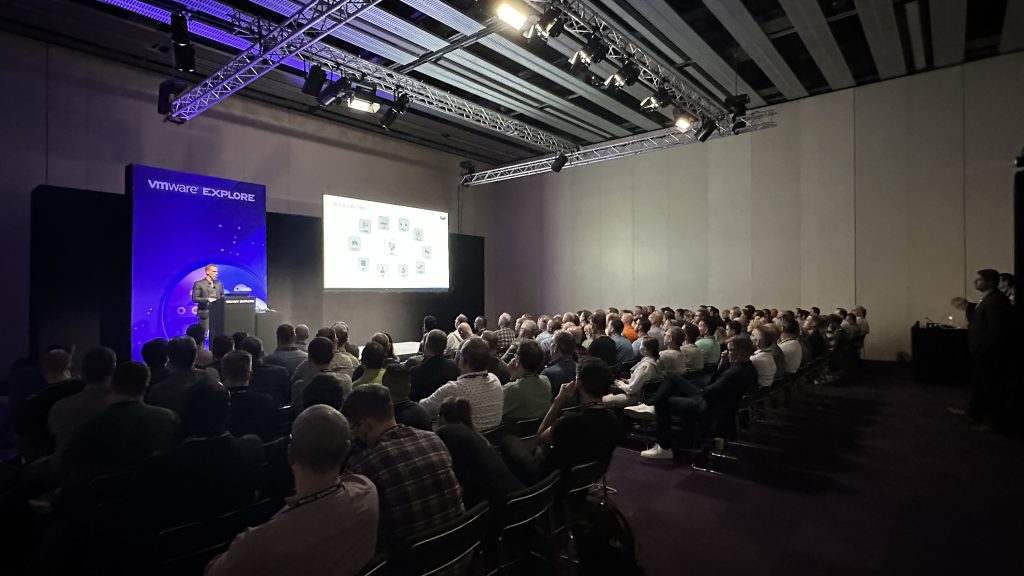
The session was opened by Dr. Felix Nensa, a professor of Radiology, at University Hospital Essen. He talked about how technological change is impacting radiology and imaging. Though he was quick to stress the need to separate the hype from the hyperbole. He cited the example of the famous statement from Jeff Hinton made in 2016 that radiologists would lose their job to AI. The fact he is one of the world’s most esteemed practitioners and is currently working tells its own version of this story. But he too underlined that major AI-driven disruption is imminent in healthcare, pointing to the rise of Alphafold as an example.
He also made the point that while AI as a concept can influence massive change, it needs the right environment to thrive. Today, we don’t have a diagnosis problem – AI can, and is, being used to identify and treat conditions – but there is a workflow and workload problem. We are spending too much time on data entry and admin and it’s not efficient. What is required is for IT teams to make it easy for healthcare workers to use data.
Real-world applications
The work they are doing at University hospital Essen is a case in point. It has created an institute of AI medicine where healthcare workers are coding – combining their knowledge in an environment where technology is intended to thrive and delivering real-world applications as a result. In the session, Dr. Nensa talked us through just a few examples.
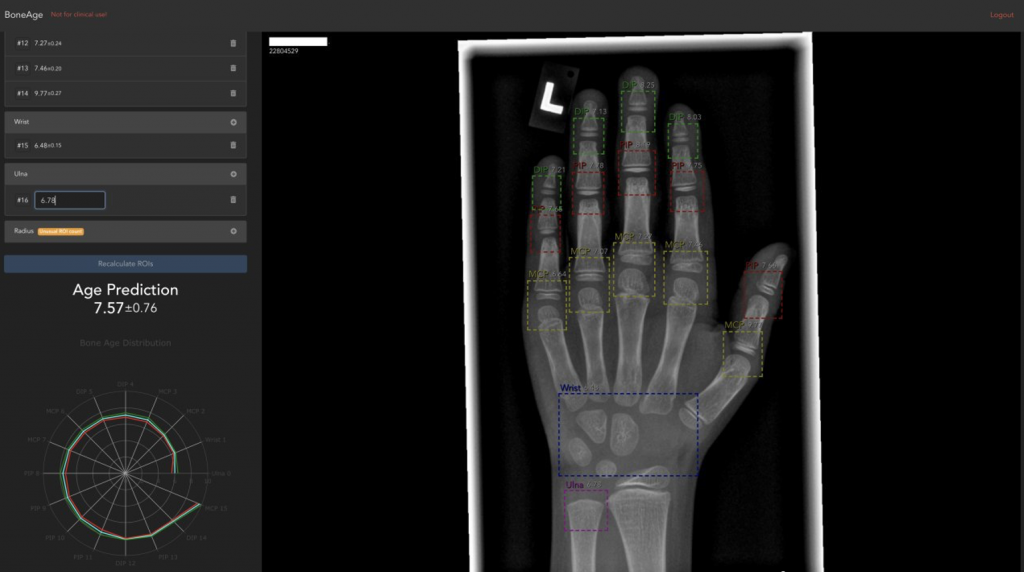
The first was Bone Age, a programme that can predict the bone age from x-rays of children and compares biological vs chronological aging. They have also created body composition analysis (BCA) scanning that can decompose a full CT scan of the body into tissue departments within seconds. This automated and AI-based process reduces analysis time and gives clinicians more detailed information ahead of activity like transplants. Finally, he explained SIRT Predict, which predicts how the liver will behave after therapy using a combination of several different systems.
AI heading multi-modal
Dr. Nensa also talked about AI in healthcare heading multi-modal. That we are going to see more models that are not just working with one aspect, like images, but something that will ingest everything we have about a patient to make powerful predictions. But there was also a note of caution in his session, in which he said,
“You cannot just deploy AI and expect it to work. There’s a lot of stuff under the surface that has to be solved and technical stuff that we need to get done. In healthcare, the data is extremely siloed and weakly connected to each other and a multimodal AI that works with this data has to get the data from everywhere.”
Dr. Felix Nensa, professor of Radiology, at University Hospital Essen
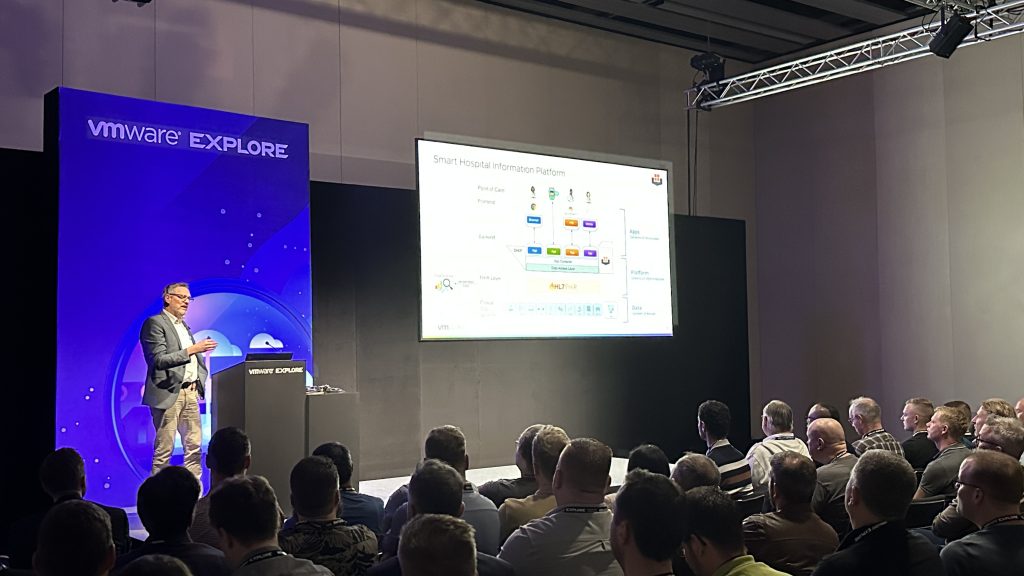
Based on these requirements, the IT team around Armin de Greiff, Technical Director at UK Essen, developed the Smart Hospital Information Platform in collaboration with Felix Team. Here, the data from the clinical subsystems is connected to the backend by means of a FHIR layer. In this way, the applications use a common data access layer and containers, which are managed from a single interface thanks to VMware Tanzu.
Digitise a clinical workspace environment
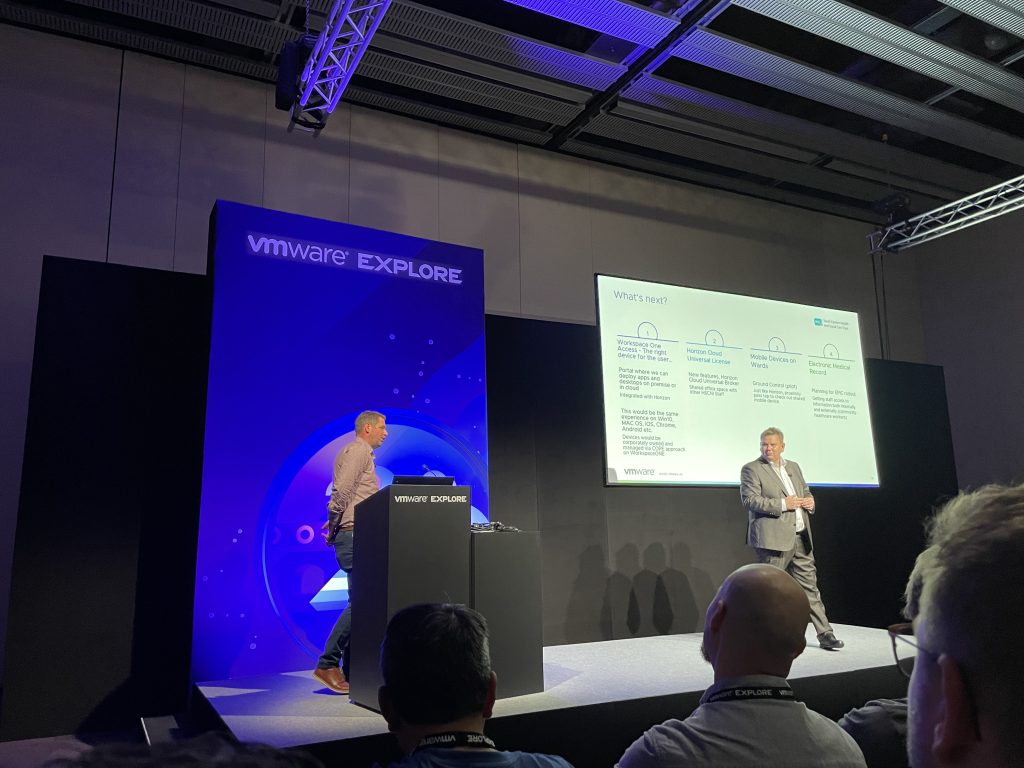
Also on stage was Martin McPeake, South Eastern Health and Social Care Trust (HSC). It is one of six healthcare Trusts in Northern Ireland, delivering acute and community services across 120 locations and three hospitals. He talked about how the trust set up a new process to completely digitise their clinical workspace environment. Something that was borne out of a governance issue – clinicians were logging in to a PC, opening an application and then walking away to treat the patient leaving it open so others were getting into parts of the system that they shouldn’t.
HSC solved this with (virtual desktop infrastructure) VDI. It set up a ‘follow me’ solution and branded it ‘My Desktop’ within the Trust. Now clinicians simply need to tap their badge to gain access to their personalised sessions. This is especially critical outside of the hospital environment. Staff can now log in from their own (or any) smart device in order to share, and gain access to information and patient information when and where required.
A simplified path to the cloud
Closing the session was our colleague, Enrique Estrada, who talked about the recent announcement on Horizon multi-cloud solutions for healthcare. A development designed to put healthcare workers in the driving seat and created a simplified path to the cloud. As Enrique said on stage:
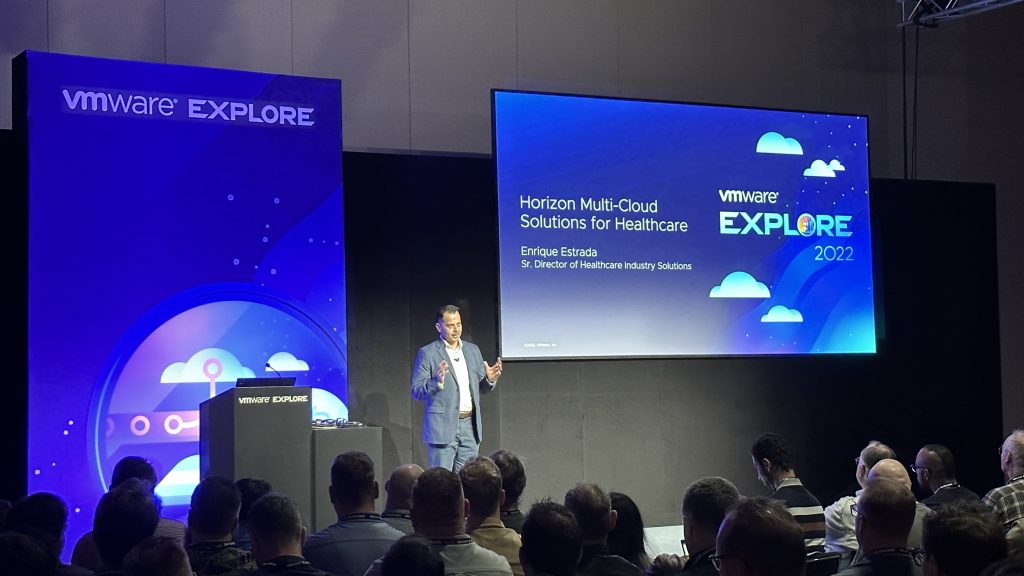
“I learned a long long time ago, the key for healthcare is not to disrupt the workflow. That is what drives adoption.”
Enrique Estrada, VMware Senior Director, Healthcare Industry Solutions
Today, clinicians see patients from their own home and nurses are no longer in a bullpen within the hospital but triaging patients remotely. It is driving a more rigorous requirement to secure how people are accessing clinical data and provide care where, when and how it is required without geography being a problem. Care has completely shifted and, as a result, so has digital transformation. It relies on ensuring enterprise applications are always available, particularly in three main areas; telehealth and remote patient monitoring, decentralized clinical trials and clinical retail. Our multi-cloud strategy is designed to bring these options to life for all aspects of healthcare.
Tomorrow and tomorrow and tomorrow
There was so much more covered in the session, which you can view in full here. The speed of change in healthcare means the exciting part is the developments we’ll see tomorrow and tomorrow and tomorrow because new advances, projects and use-cases are being delivered every day. Please contact me here vmcare@vmware.com with any questions or if you would like to discuss the content here.
Originally published at: VMware EMEA blogs
Social Kit

- It’s hard to keep up, but the speed of change offers an opportunity for improvement and the chance to make a positive difference in all areas of healthcare [link]
- Care has completely shifted and, as a result, so has digital transformation. It relies on ensuring enterprise applications are always available [link]
- We are spending too much time on data entry and admin and it’s not efficient. What is required is for IT teams to make it easy for healthcare workers to use data [link]
Facebook/LinkedIn
- Major AI-driven disruption is imminent in healthcare if we can make it easy for healthcare workers to use data. Hear from Dr. Felix Nensa, a professor of Radiology, at University Hospital Essen and others as they examine how AI is making a positive difference today, and the impact it might have in the future. [link]








